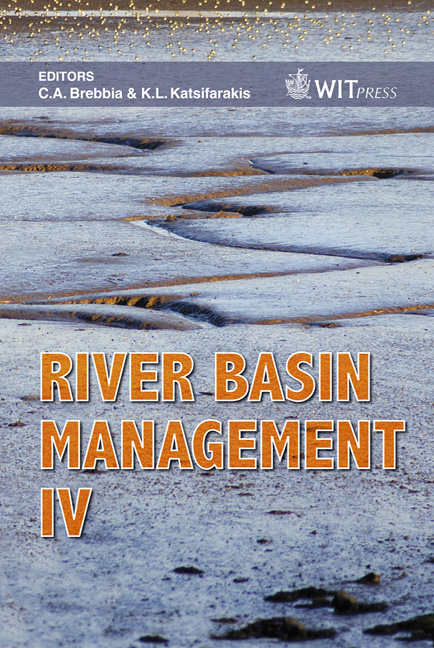A Hydrological Model To Evaluate Environmental Impacts Due To Extensive Irrigation. Case Study: Basin Of The Ludueña Stream, Santa Fe, Argentina
Price
Free (open access)
Transaction
Volume
104
Pages
13
Published
2007
Size
536 kb
Paper DOI
10.2495/RM070431
Copyright
WIT Press
Author(s)
E. Zimmermann, G. Riccardi & M. Portapila
Abstract
A mathematical model of hydrological simulation quasi-3D is described. The model is suitable to simulate the hydrological behaviour in flat land considering interactions between the surface zone, vadose zone (UZ) and saturated zone (SZ). The space domain is discretized in layers of surface and underground cells. In each cell, the model can quantify state variables dynamically (interception, surface storage, UZ and SZ storages) and exchange flows (evapotranspiration, infiltration, surface and groundwater flows, flow through constrictions). This aptitude of connecting surface and groundwater hydrology enables the model to predict changes in the hydrological process due to human activities at basin scale as well as long term impacts. In this paper results of the application and calibration of the model for the Ludueña Stream System (Santa Fe, Argentina) are described. The model was run to evaluate the hydrological effects that arise out of four extensive irrigation scenarios in the Ludueña Stream basin. The simulation is done for a period of twenty years. The considered scenarios are as follows: #0 corresponds to the present situation in the basin, for which the model was calibrated; #1, #2 and #3 are three hypothetical scenarios where the soil moisture levels are 60%, 75% and 90% of the field capacity, respectively. It is demonstrated that scenario #1 does not have great consequences for the hydrological process and does not contribute to groundwater vulnerability. The results for scenario #2 present important consequences for the hydrological process of the real system. An increment in the recharge of the aquifer is found, modifying the groundwater table, with higher impact in low areas. The vulnerability to the contamination processes rises considerably towards the basin head. For scenario #3, the hydrological process has a very significant variation, not only for the mean and extreme hydrological values but also for the space patterns. The groundwater level is greatly increased reaching a situation of high vulnerability in terms of contamination processes. From these results, we conclude that scenarios #2 and #3 are unfeasible as far as sustainable irrigation is concerned.
Keywords





